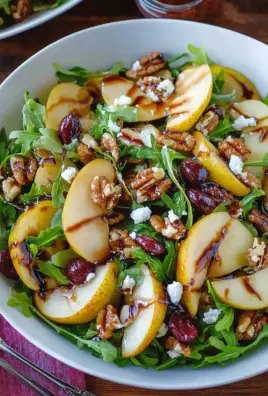This lemon cheesecake is a dream dessert for citrus lovers. It blends a rich, velvety cream cheese base with the bright punch of fresh lemon juice and zest, all nestled in a classic graham cracker crust. The glossy layer of lemon curd on top adds extra depth and visual appeal, making this a stunning yet approachable dessert for any occasion.

Whether you’re hosting a dinner party, celebrating a holiday, or just want to impress your family with a homemade treat, this lemon cheesecake delivers in both taste and presentation.
Why You’ll Love This Lemon Cheesecake
- Bright and tangy flavor: The balance of tart lemon and creamy cheesecake is perfection.
- Classic with a twist: It’s a familiar dessert, elevated by the citrusy top layer of lemon curd.
- Easy to make ahead: Chill it overnight, and it’s ready to serve the next day.
- Freezer-friendly: It stores beautifully and slices cleanly after thawing.
- Perfect for warm weather: A refreshing alternative to rich, heavy desserts.
Essential Tools and Equipment
To make this recipe seamless and foolproof, it’s important to gather the right tools before starting.
- 9-inch springform pan – Allows easy removal of the cheesecake without disturbing the crust.
- Stand mixer or hand mixer – Crucial for achieving a silky smooth batter.
- Mixing bowls – For crust and filling prep.
- Spatula – For folding and scraping batter cleanly from the sides.
- Zester or microplane – Helps extract the most flavor from fresh lemons.
- Heavy-duty foil – Prevents water from leaking into the springform pan during the water bath.
- Roasting pan – Used to create a gentle baking environment by surrounding the cheesecake with water.
Why These Tools Matter
- The springform pan is non-negotiable for clean presentation and easy serving.
- A mixer ensures the cream cheese is lump-free, which is key for texture.
- A water bath (bain-marie) helps regulate oven temperature and prevents surface cracking.
- Using foil effectively keeps the cheesecake dry while it bakes.
Preparation Tips for Success
- Use room temperature ingredients: Cream cheese and eggs should be at room temp to mix smoothly.
- Add eggs one at a time: This helps keep the batter uniform and prevents overmixing.
- Avoid overmixing: Too much air in the batter can lead to cracks.
- Wrap the pan well: Use multiple layers of foil to prevent water seepage in the water bath.
- Cool gradually: Turn off the oven and leave the cheesecake inside for an hour. This gentle transition reduces the chance of cracking.
Ingredients List
For the Crust
- 2 cups graham cracker crumbs
- ¼ cup granulated sugar
- ½ cup unsalted butter, melted
For the Cheesecake Filling
- 32 oz cream cheese, softened (4 x 8 oz packages)
- 1 cup granulated sugar
- 4 large eggs
- 2 teaspoons vanilla extract
- 4 tablespoons fresh lemon juice
- 1 tablespoon lemon zest
For the Topping
- 10 oz lemon curd (store-bought or homemade)
- Whipped cream, for serving
Step-by-Step Directions
- Preheat the oven to 325°F (163°C).
- Prepare the crust:
- In a medium bowl, combine graham cracker crumbs, sugar, and melted butter.
- Press the mixture firmly into the bottom and slightly up the sides of a 9-inch springform pan.
- Refrigerate while making the filling.
- Make the cheesecake batter:
- Beat the cream cheese until smooth and creamy.
- Gradually add the sugar, scraping down the sides of the bowl.
- Add the eggs one at a time, mixing well after each.
- Stir in the vanilla, lemon juice, and zest. Mix just until combined.
- Prepare for baking:
- Bake in a water bath:
- Place the springform pan in a large roasting pan.
- Pour hot water into the roasting pan until it reaches halfway up the sides of the cheesecake pan.
- Reduce the oven to 300°F (149°C) and bake for 90 minutes.
- Cool and chill:
- Turn off the oven and let the cheesecake sit inside with the door closed for 1 hour.
- Remove from the water bath and let cool to room temperature.
- Cover and refrigerate for at least 8 hours, preferably overnight.
- Add the topping:
- Gently warm the lemon curd until spreadable.
- Spread it over the chilled cheesecake.
- Garnish with whipped cream before serving.
How to Serve Lemon Cheesecake Perfectly
Presentation enhances flavor perception. These simple tips ensure your lemon cheesecake looks and tastes outstanding.
- Chill thoroughly before slicing. The cheesecake should be firm and cold for the cleanest cuts.
- Use a hot knife: Run a sharp knife under hot water, dry it, and slice. Wipe the blade between cuts for neat servings.
- Top it beautifully: Spoon extra lemon curd on top, or add fresh lemon slices, berries, or a sprinkle of powdered sugar.
- Serve with whipped cream for added richness and texture contrast.
- Portion with care: This recipe makes 10 generous slices, but you can cut smaller pieces for larger gatherings.
Common Mistakes to Avoid and How to Get It Just Right
Even a simple cheesecake recipe can go wrong if basic steps are overlooked. Here’s what to avoid—and what to do instead.
1. Using Cold Ingredients
Mistake: Starting with cold cream cheese or eggs leads to lumpy batter.
Solution: Always bring ingredients to room temperature before mixing.
2. Overmixing the Batter
Mistake: Beating the batter too long adds air, which can cause cracking or a puffed texture.
Solution: Mix just until combined, especially after adding eggs.
3. Skipping the Water Bath
Mistake: Baking cheesecake without a water bath can result in dry texture and surface cracks.
Solution: Always bake in a water bath or place a pan of hot water on a lower rack to create steam.
4. Not Wrapping the Springform Pan Properly
Mistake: Water seeps into the crust, making it soggy.
Solution: Wrap the bottom and sides of the springform pan tightly with multiple layers of heavy-duty foil.
5. Opening the Oven Door While Baking
Mistake: Sudden temperature changes cause the cheesecake to collapse or crack.
Solution: Avoid opening the oven during baking. Use the oven light to check progress.
6. Rushing the Cooling Process
Mistake: Taking the cheesecake out too soon can shock it and lead to cracks.
Solution: Turn off the oven and let the cheesecake rest inside for an hour before removing.
7. Cutting Too Early
Mistake: Serving before it’s fully set compromises both texture and flavor.
Solution: Chill for at least 8 hours, preferably overnight.
8 Perfect Side Dishes to Pair with Lemon Cheesecake
Pair your lemon cheesecake with light, refreshing accompaniments to balance the richness. These suggestions work well for dessert buffets or plated service.
1. Fresh Mixed Berries
- Blueberries, raspberries, or blackberries bring tartness and a pop of color.
2. Raspberry Coulis
- A drizzle of raspberry sauce adds flavor contrast and visual elegance.
3. Lemon Sorbet
- Intensifies the citrus notes and provides a refreshing palate cleanser.
4. Fruit Salad with Mint
- Light and fragrant, it complements the creamy cheesecake beautifully.
5. Sparkling Lemonade
- A bubbly, slightly tart drink enhances the citrusy profile.
6. Pistachio Biscotti
- Offers crunch and a nutty contrast to the soft cheesecake.
7. Iced Earl Grey Tea
- The bergamot notes pair well with lemon, making it a sophisticated beverage choice.
8. Champagne or Prosecco
- Ideal for celebrations, light sparkling wines cut through the richness of the dessert.
Serving Tips Recap
- Slice cleanly with a hot knife
- Garnish with fruit or whipped cream
- Let it chill fully for optimal texture
- Match with light, fruity drinks or crisp textures for contrast
Pro Recipe Tips and Flavor Variations
A few expert tweaks can elevate this lemon cheesecake to bakery-quality results. These techniques focus on texture, flavor, and presentation.
1. Smooth Batter is Key
- Beat cream cheese until completely smooth before adding sugar and eggs.
- Scrape the bowl frequently to prevent lumps and uneven mixing.
2. Prevent Cracks with a Moist Baking Environment
- Always bake in a water bath. It maintains even heat and prevents surface cracks.
- Cool gradually in the oven to avoid temperature shock.
3. Use Fresh Lemon Juice and Zest
- Bottled lemon juice lacks the vibrancy of fresh citrus. Fresh zest intensifies flavor and aroma.
4. Add a Citrus Twist
- Substitute part of the lemon juice with orange or lime juice for a different citrus profile.
- Use Meyer lemons for a naturally sweeter, floral touch.
5. Customize the Crust
- Swap graham crackers for gingersnap cookies, vanilla wafers, or almond flour for gluten-free alternatives.
- Add a pinch of cinnamon or ginger to the crust for a spiced undertone.
Storage and Freezing Instructions
Proper storage keeps your lemon cheesecake fresh and ready to serve for days or even weeks in advance.
Refrigeration
- Store the cheesecake in the springform pan or an airtight container.
- Keep covered with plastic wrap or foil in the refrigerator.
- Best enjoyed within 5 days of baking.
Freezing
- Wrap individual slices or the whole cheesecake tightly in plastic wrap, followed by aluminum foil.
- Freeze for up to 3 months.
- To serve, thaw overnight in the refrigerator. Avoid microwaving frozen cheesecake as it alters texture.
Reheating
- Cheesecake is best served chilled.
- If preferred slightly warm, microwave a slice for 10–15 seconds without whipped cream topping.
Frequently Asked Questions
What is the secret to a perfect cheesecake texture?
Use room temperature ingredients and avoid overmixing. A water bath and slow cooling process help ensure a smooth, creamy consistency.
Can I use bottled lemon juice instead of fresh?
You can, but fresh lemon juice provides a brighter and more vibrant flavor. It’s highly recommended for the best result.
How do I prevent my cheesecake from cracking?
Use a water bath, don’t overmix the batter, and let the cheesecake cool gradually inside the oven.
Why does my cheesecake have a sour taste?
This can result from overbaking or using low-quality cream cheese. Make sure ingredients are fresh and measurements accurate.
Can I freeze this lemon cheesecake with lemon curd on top?
Yes. Lemon curd freezes well. Just make sure it is fully set before freezing to avoid smearing or sticking.
How long should cheesecake set before serving?
At least 8 hours, ideally overnight. This allows the filling to firm up for clean slicing and optimal flavor.
Do I need a springform pan?
Yes, for best results. A springform pan allows you to remove the cheesecake cleanly without damaging the crust or sides.
Is it possible to make this recipe gluten-free?
Yes. Use gluten-free graham crackers or an almond flour-based crust to keep it gluten-free.
Conclusion
This lemon cheesecake brings together a silky smooth texture, a refreshing citrus profile, and an eye-catching finish thanks to the glossy lemon curd topping. With a little care in preparation and presentation, you’ll deliver a dessert that impresses every time.
To recap:
- Use room temperature ingredients
- Beat cream cheese thoroughly before adding other ingredients
- Always bake in a water bath
- Chill fully before slicing
- Garnish simply for a beautiful finish
Whether you’re a seasoned baker or making cheesecake for the first time, this recipe provides a reliable foundation with plenty of room to customize and experiment. Try it once, and it’s sure to become a favorite.
For more dessert inspiration, check out our Classic New York Cheesecake, Homemade Lemon Curd Recipe, or browse our full collection of citrus dessert recipes.
Lemon Cheesecake
Ingredients
For the crust:
- 2 cups graham cracker crumbs
- 1/4 cup granulated sugar
- 1/2 cup unsalted butter melted
- For the cheesecake:
- 32 ounces cream cheese softened (4 x 8-ounce packages)
- 1 cup granulated sugar
- 4 large eggs
- 2 teaspoons vanilla extract
- 4 tablespoons fresh lemon juice
- 1 tablespoon lemon zest
For topping:
- 10 ounces lemon curd store-bought or homemade
- Whipped cream for serving
Instructions
- Preheat the oven to 325°F (163°C).
- In a medium bowl, combine graham cracker crumbs, sugar, and melted butter. Mix until evenly moistened.
- Press the mixture firmly into the bottom and slightly up the sides of a 9-inch springform pan. Refrigerate while preparing the filling.
- In a stand mixer fitted with the paddle attachment, beat the cream cheese on medium speed until smooth and creamy, with no lumps.
- Gradually add the sugar, scraping down the sides of the bowl as needed.
- Add the eggs one at a time, mixing thoroughly after each addition.
- Stir in vanilla extract, lemon juice, and lemon zest. Scrape down the bowl again and mix just until combined.
- Pour the cheesecake batter into the prepared crust and smooth the top.
- Place the pan inside a large roasting pan and carefully pour hot water into the roasting pan until it reaches halfway up the sides of the springform pan.
- Reduce oven temperature to 300°F (149°C) and bake for 1 hour and 30 minutes.
- Turn off the oven and leave the cheesecake inside with the door closed for an additional hour to allow it to set gradually. The center should still jiggle slightly.
- Remove the cheesecake from the oven and water bath. Let it cool to room temperature.
- Cover and refrigerate for at least 8 hours, preferably overnight.
- Once chilled, remove the outer ring of the springform pan.
- Warm the lemon curd slightly in the microwave in 20-second intervals until spreadable. Spread over the top of the cheesecake.
- Garnish with whipped cream before serving.




Leave a Comment